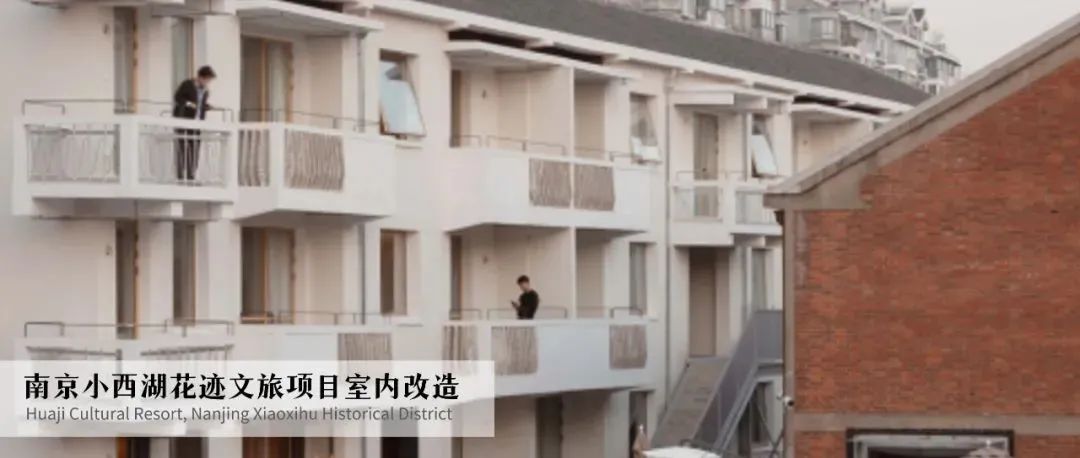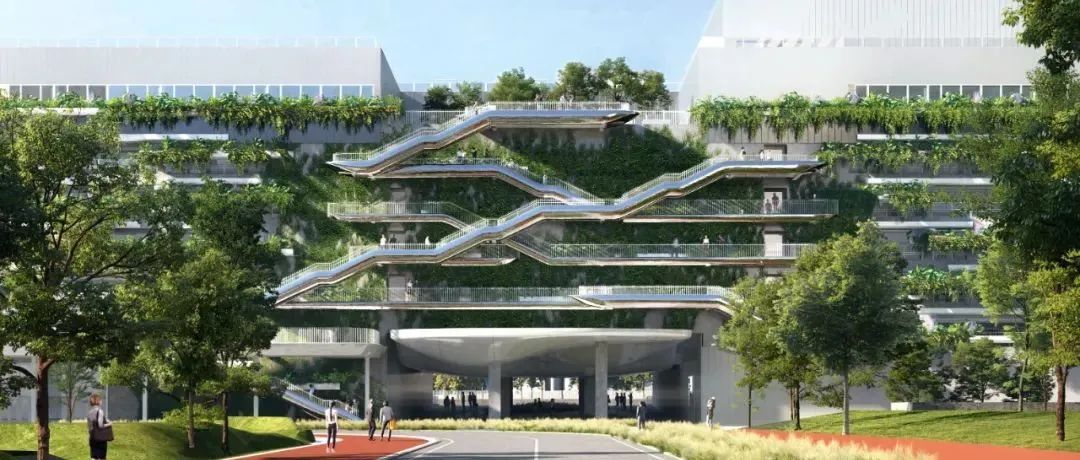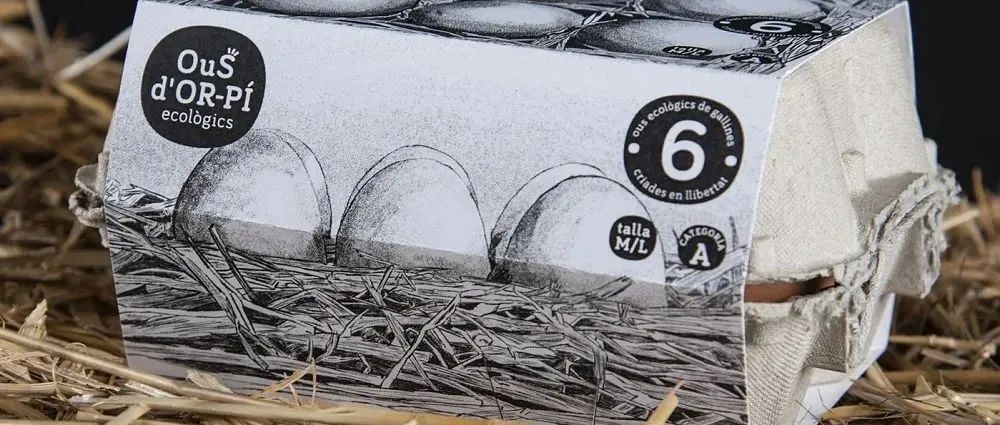▲小西湖鸟瞰
View of Xiaoxihu Historical District ©Mata Okawa
连接夫子庙与老门东街区的小西湖历史风貌区地处南京老城南核心地带,片区保留了江南传统街区空间格局,街巷宽窄不定,无规则延伸,自然地串联起两侧的风貌建筑。
The Historic Landscape District of Xiaoxihu, which connects Confucius Temple and East Zhonghua Gate Historical Culture Block , is located in the core of Nanjing’s old southern city. The district preserves the spatial pattern of the traditional neighborhoods in the south of the Yangtze River, with streets and alleys of varying widths and irregular extensions, naturally linking the historic buildings on both sides.
▲29号楼改造后立面
Facade of Building 29 after renovation ©Mata Okawa
▲29号楼改造后立面
Facade of Building 29 after renovation ©Mata Okawa
此次设计范围为片区北侧四栋相邻的建筑,其中两幢为单层木结构双坡建筑,木结构保存情况良好;另外两幢为多层砖混结构筒子楼,室内开间仅有3米。
Our design scope includes four adjacent buildings on the north side of the area, Two of which are in wood structure with good status. The other two Tongzilou – the existing structure inherits from communal residence from the last century – are in brick-concrete structure, with extremely narrow interior spanning of 3 meters.
▲剖透视
Section perspective ©SZ-ARCHITECTS
▲功能分析图
Functional analysis diagram ©SZ-ARCHITECTS
业主的诉求是将花迹文旅商业项目的多种业态(包含了中西餐饮,咖啡馆,酒吧与酒店住宿等)融入到老民居建筑中。设计面临的最大挑战在于,解决新商业业态所需要的连续大尺度空间与现状存在的大量小开间的矛盾。
Commissioned by our partner, our design team introduces a mixture of commercial types, including hospitality and F&B, into the site. The greatest challenge is to recalibrate the conflict between the old divided architectural layout, and the new commercial use, which normally requests consecutive spaces with much larger square footages.
PART ONE
建立东西贯穿的空间序列
▲31号楼中餐厅连续包厢
Consecutive room on Chinese Restaurant of Building 31 ©Mata Okawa
为了更好地融入当地文化,设计团队走访了南京传统私家民宅的代表——甘煕宅第,多进穿堂式的空间格局,1米左右的窄门串联相邻空间,形成层层嵌套的空间序列及严谨的南北轴线。
In order to integrate into local culture, our design team visited the Ganshi Residence, a representative of local historic residence, which has a multi-step spatial pattern with narrow openness of about 1 meter connecting adjacent spaces, forming a sequence of nested spaces following the north-south axis.
甘熙宅第的整体空间序列对设计产生了启发,在处理29、31号楼底层商业室内空间的更新时,受结构及预算的限制,无法打通所有墙体,因而在垂直于东西向的墙面上设置多个连续的大小不一的门洞。
We get inspired and created a consecutive openness within the restrictions from the existing structure and budget, while we are tackling the commercial spaces on the ground floor.
▲室内连续开洞分析图
Analysis diagram of indoor opening connection design method ©SZ-ARCHITECTS
所有室内门窗洞口的定位及尺寸都经过设计与结构方多次讨论计算,门洞串联起前台、咖啡厅、餐厅等不同功能空间,形成多条贯穿东西的空间序列。在建筑内部营造出“步移景异”的空间体验。门内有门,景中有景,使不同序列的空间沿着一条轴线逐次展开,形成私密又暧昧的空间联系。
The openness, whose positioning and size have been discussed and calculated by the designer and the structural engineer, has various sizes and connects reception, café, and restaurants following the axis that travel through east and west. We attempt to realize the visiting experience with a curated sequence that ‘scene changes as step moves’.
▲29号楼一层西餐厅卡座
Private dining room on the first floor of Building 29 ©Mata Okawa
▲29号楼一层西餐厅16人包厢
Private sixteen seats dining room on the first floor of Building 29 ©Mata Okawa
在满足消防前提下拆除原有29号楼中间及31号楼的两侧的三部原始楼梯,纵向上,打破原有平层的空间格局,形成挑空的中庭天井,解决底层采光不足、空间逼仄的问题;并且作为建筑层与层间的过渡空间,使得不同层间的活动通过观看互相渗透,客人隔层互动也成为可能。
Three original stairs in the building 29 and 31 are demolished on the premise of meeting requirements of the fire control, Longitudinally, the original stacking floor plans are re-organized, and a multi-story atrium is created at the main traffic intersections. It resolves the insufficient daylight on the ground floor, meanwhile as a buffer space, it makes floor-to-floor interaction possible.
▲29号楼一层中庭
Atrium on the first floor of Building 29 ©MataOkawa
▲29号楼三层中庭
Atrium on the 3rd floor of Building 29 ©Mata Okawa
▲31号楼三层中庭开窗
Opennese of the atrium on the 3rd floor of Building 31 ©Mata Okawa
PART TWO
半开敞空间联通社区
▲29号楼咖啡外摆区
External area of cafe on the building 29 ©Mata Okawa
29、31号楼建造年代与周边风貌区建筑相差较远,体量较大,且建筑风格与风貌区不符。因此,设计尽可能使建筑以开放的姿态融入周边社区。建筑底层餐饮区立面选取可开启式的大面积玻璃门窗,并向建筑外部拓展外摆区。
To deal with the large volume of the host building, we approach the existing structure with an open, welcoming gesture that mingles with the surrounding community. The commercial façade on the ground floor is designed with large operatable glass windows in an attempt to let the commercial activities permeate through the exterior.
▲31号楼咖啡厅上悬窗立面
Large operatable glass windows of cafe of building 31 ©Mata Okawa
建筑2-4层为酒店,共有44间客房。在酒店交通空间设计时,我们打破现代酒店空间封闭式走廊的模式,取而代之的是老式居民楼半开敞式走廊,将老城区的生活气息带入设计中。
The second to fourth floors accommodates 44 guestrooms. In the contrast to the enclosed hotel corridor, we place the corridor into the semi-open doorway and bring the vibrant old city living vibe into the visiting experience.
▲29号楼北侧酒店半开敞式走廊
North facade of building 29 with semi-open doorway ©Mata Okawa
为解决原有居民楼小开间无法满足酒店客房居住舒适性问题,设计延续了公区的开洞的手法,将两间合并为一间套房。窗洞代替原有墙面的装饰画,打破小开间的闭塞。
In order to solve the problem that the narrow interior spanning can not meet the living comfort of hotel rooms, the designer combines the two rooms into one suite by creating openness on the wallas as the public area. The openness replaces the decorative painting to break the closure of the small room.
▲29号楼客房公区走廊
Semi-open doorway of building 29 ©Mata Okawa
在顶层原有坡屋面的基础上,部分客房为了保证主要使用空间(除卫生间等服务空间)层高,一侧吊顶基本延原有坡度铺设,另一侧用于隐藏设备管线,形成自由不对称的新式坡顶。
On the basis of the original sloping roof, for sufficient floor height of the main space (except toilet and other service space), the ceiling on one side is basically laid along the original slope, and the other side is used to hide equipment pipelines, which creates a free and asymmetric place.
▲29号楼四层套房
Suite on the fourth floor of Building 29 ©Mata Okawa
▲31号楼双床房
Double Room of Building 31 ©Mata Okawa
另一些客房则延续原有阁楼夹层,设计成酒店亲子客房。色彩的碰撞与拼接让空间充满时尚与活力。
Other rooms are used as parent-child rooms by redesigning the original attic. The collision and splicing of colors make the space full of vitality.
▲29号阁楼客房
Loft rooms on the 4th floor of Building 29 ©Mata Okawa
家型的低矮小阁楼配以柔和的灰蓝和米色,增加儿童空间的趣味性。
The low and small loft with house-type roof is decorated with gray blue and beige paint to enhance the fun of children's space.
▲31号楼阁楼亲自套房
Loft Room of building 31 ©Mata Okawa
楼梯扶手使用淡蓝色镂空编织杆件,结合立面不规则的开窗,使得原本逼仄的交通空间显得轻巧通透。
Light blue woven metal are used for stair handrails, combined with irregular windows on the facade, making the originally cramped traffic space appear light and airy.
▲31号楼楼梯
Stairs of building 31 ©Mata Okawa
并且放大部分交通节点,如在外挂钢梯与中庭交汇处设置酒店半开敞的小公区,引导客人在此休憩停留或交谈。
Highlight some traffic nodes, such as creating a semi open public area at the intersection of external steel ladder and atrium to guide guests to rest, stay or talk.
▲29号楼三层中庭与外挂楼梯交汇点
Intersection of external steel ladder and atrium ©Mata Okawa
▲连接29和31号楼的钢结构廊道
Steel constructed corridor connecting buildings 29 and 31 ©Mata Okawa
PART THREE
新旧交融
▲改造后的木结构餐厅
Renovated wood-frame restaurant ©Runzi Zhu
整体室内改造的原则是在保证使用的舒适性的同时尽可能保留建筑历史的痕迹。在底层公区基本不使用吊顶,暴露出原有的木结构双坡屋顶、混凝土梁以及建筑加固构件和金属管道等。
Our interior approach is to preserve the traces of the building's history as much as we could. The majority of the spaces are left with open ceiling that exposes the existing wood structure, concrete beams, and reinforcement elements.
▲餐厅墙面壁画
Mural based on the scars left on wall ©朱润资
餐厅保留了木结构建筑斑驳的老墙面,邀请艺术家魏全儒先生根据现场破损墙面所留下的瘢痕创作的壁画。
The restaurant retains the mottled old walls ,we invites the artist Wei Quanru to create murals based on the scars left on site.
▲31号楼一层餐厅材质碰撞
Decorative materials collision in the 1th floor restaurant ©Mata Okawa
带有时间痕迹的混凝土梁与肌理丰富的米色水磨石涂料、木饰面,裸露的灯具及设备管道,不同时间的物件互相碰撞,又保留统一的质朴的格调,在老建筑里讲述着新鲜事。
A large amount of concrete beams, texture paint, wood finishes, and hanging pendants are used to create the sense of time discrepancy yet retain a unified tone.
▲29号楼二层餐厅墙面材质碰撞
Wall materials collision in the Second floor restaurant ©Mata Okawa
咖啡厅的墙裙选用了废弃木门作为材料,经过重新的打磨搭配浅色的原生的水磨石墙面和金属磨砂质感的餐椅,复古中参杂着时尚元素。
The wainscot of the cafe is made of the abandoned wooden door , which has been re-polished, matched with the light colored native terrazzo wall and the metal frosted dining chairs. The retro space is mixed with fashion elements.
▲29号楼阳台新增5mm钢件
reinforced railing is added to the balcony of Building 29 ©Mata Okawa
拆除了阳台上原有居民加建的窗,保留原有阳台扶手,仅增设较细的杆件,使得其高度满足建筑规范要求。
The windows added by the residents on the balcony are removed, the handrail are retained, with only the addition of thinner bars,making its height meet the requirements of building codes.
花迹文旅项目的诞生成为小西湖历史地段地标性的存在之一,很好的承载了周边社区的生活,将吸引更多的青年群体入驻,使得老区的生命不断得以延续焕新。
The project has become one of the landmark existences in the historical area of Xiaoxihu, carrying the life of the surrounding community, which will attract young groups to move in and make the life of the old district to be renewed.
▲老城区内眺望29号楼
View of Building 29 from the old town ©Mata Okawa
项目信息
建筑事务所: 实在建筑工作室
事务所网站: www.sz-architects.net
联络邮箱: SZ-architects@outlook.com
微信公众号:实在建筑工作室
公司所在地: 上海
项目设计年份: 2019年12月
项目完成年份: 2021年12月
建筑面积: 4288m²
项目地址: 中国江苏省南京市秦淮区马道街
视觉信息
摄影师:Okawa Mata, 朱润资
项目参与者
室内设计: 实在建筑工作室
主创建筑师: 张志坤
设计团队: 刘悦,徐桦,梁鑫,于振鹏,叶鑫凯,孔德勇
委托方: 南京花迹文旅
General Information
Architecture Firm: SZ-ARCHITECTS
Website: www.sz-architects.net
Contact e-mail: SZ-architects@outlook.com
Firm Location: Shanghai,China
Design Year: 2019
Completion Year: 2021
Gross Built Area: 4288m²
Project location: Madao Rd,Qinghuai District,Nanjing,China
Media Provider
Photo credits: Mata Okawa,Runzi Zhu
Project Credits
Interior Design: SZ-ARCHITECTS
Lead Designer: Zhikun Zhang
Design Team: Yue Liu, Hua Xu, Xin Liang, Ivan, Xinkai Ye, Deyong Kong
Clients: Nanjing Huaji Hotel
本文来自微信公众号“建筑手帐C”(ID:archipocket)。大作社经授权转载,该文观点仅代表作者本人,大作社平台仅提供信息存储空间服务。












